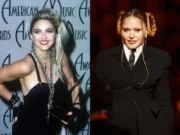
For years, the fitness world focused on aesthetics—flat stomachs, big biceps, toned glutes. But in 2025, a new trend is dominating gyms and training studios worldwide: functional fitness. Instead of chasing looks, people are training for strength, mobility, and performance in everyday life.
Whether it’s carrying groceries, playing with your kids, or preventing injuries, functional fitness is proving to be the smarter way to train.
What Is Functional Fitness?
Functional fitness focuses on exercises that mimic real-life movements. Unlike isolated muscle training (like bicep curls), functional exercises engage multiple muscle groups and joints.
Examples include:
- Squats → mimic sitting and standing.
- Deadlifts → mimic lifting heavy objects.
- Push-ups → mimic pushing movements in daily life.
- Farmer’s carries → mimic carrying shopping bags or luggage.
It’s not just about building muscle—it’s about building usable strength.
Why It Matters in 2025
- Longevity over vanity. People care more about staying mobile in their 50s and 60s than chasing abs in their 20s.
- Injury prevention. Functional training strengthens stabilizer muscles, reducing the risk of back pain, knee problems, and shoulder injuries.
- Everyday performance. From climbing stairs to moving furniture, these workouts translate directly into real life.
- Holistic health. It’s about balance, flexibility, coordination, and endurance—not just raw strength.
Functional Fitness vs. Traditional Training
- Traditional Training: Isolates muscles (bench press, curls, leg extensions). Great for aesthetics, but limited in real-life transfer.
- Functional Training: Combines movements (kettlebell swings, lunges with rotation, pull-ups). Great for everyday strength and long-term health.
Many athletes now blend both: they build aesthetics with traditional lifts but focus on functional circuits for performance.
How to Start Functional Training
- Begin with bodyweight basics: squats, push-ups, planks.
- Add compound lifts: deadlifts, pull-ups, kettlebell swings.
- Include mobility drills: yoga flows, hip openers, dynamic stretching.
- Train with real-life objects: sandbags, medicine balls, resistance bands.
You don’t need a fancy gym—functional workouts can be done at home or outdoors.
The Mental Side of Functional Fitness
Unlike vanity-driven training, functional fitness focuses on what your body can do, not just how it looks. This shift reduces gym anxiety, boosts motivation, and helps people build healthier long-term habits.
Functional fitness isn’t just a trend—it’s the future. In 2025, more people are training for performance, mobility, and longevity rather than aesthetics alone. It’s about moving better, living stronger, and staying injury-free.
Because at the end of the day, it’s not about the mirror—it’s about the life you live outside the gym.































